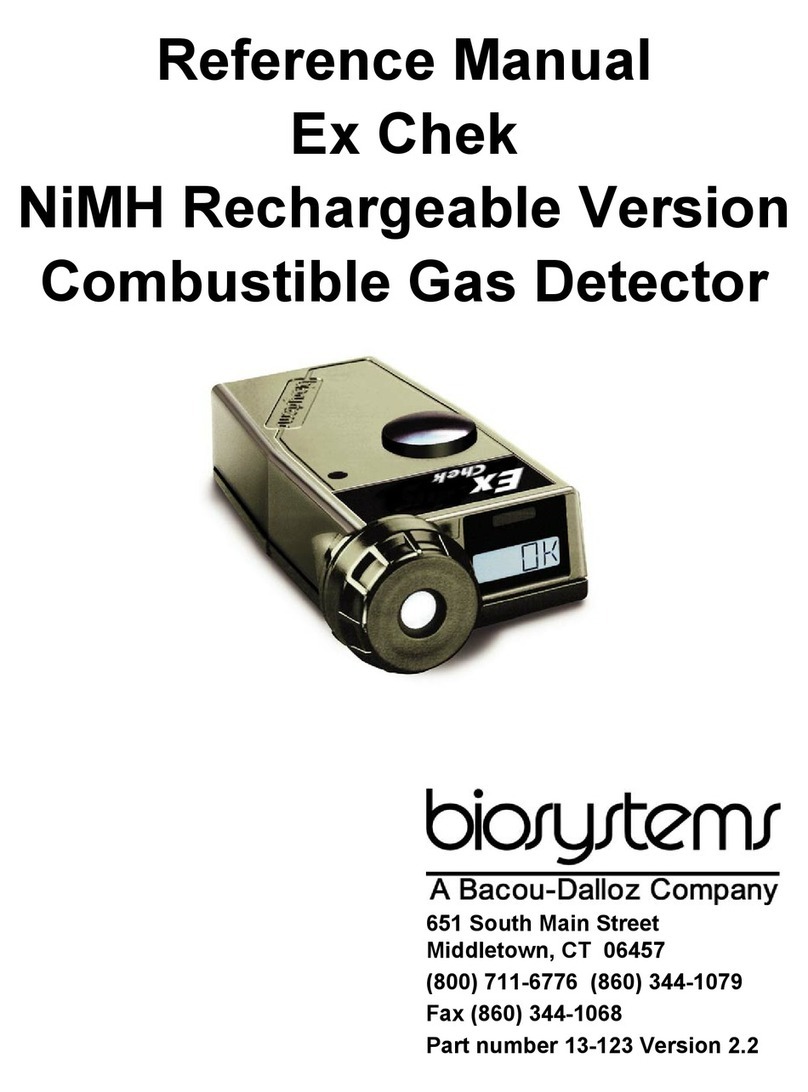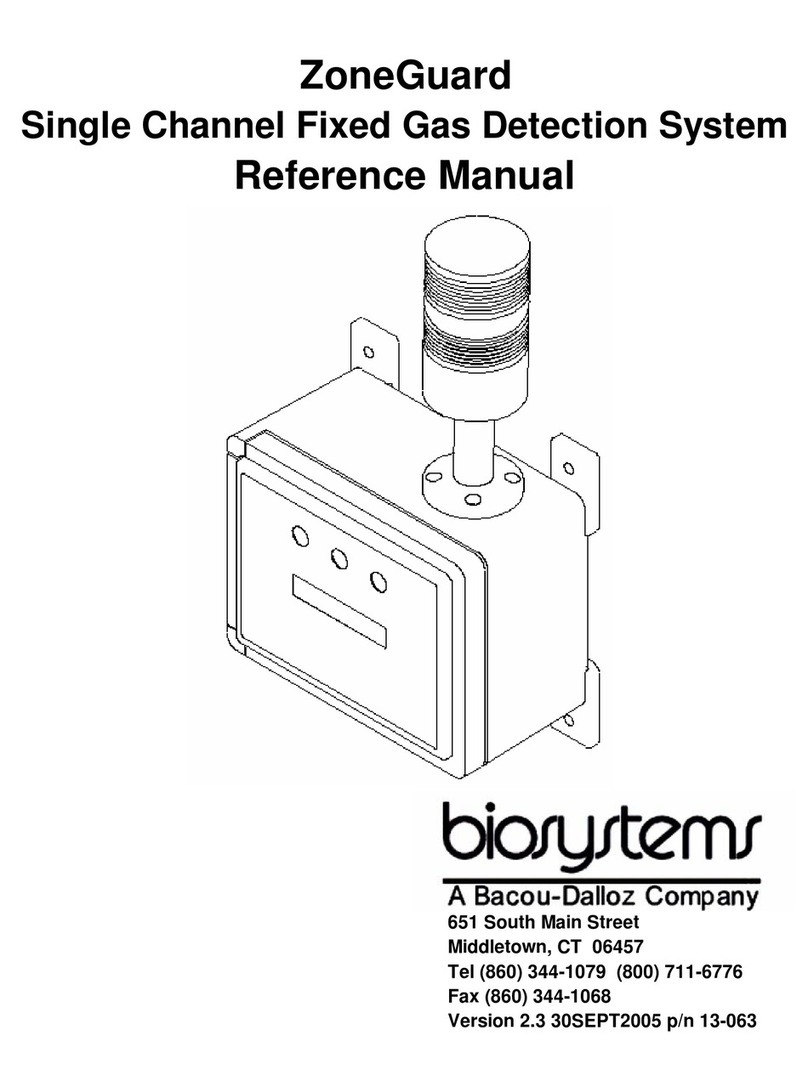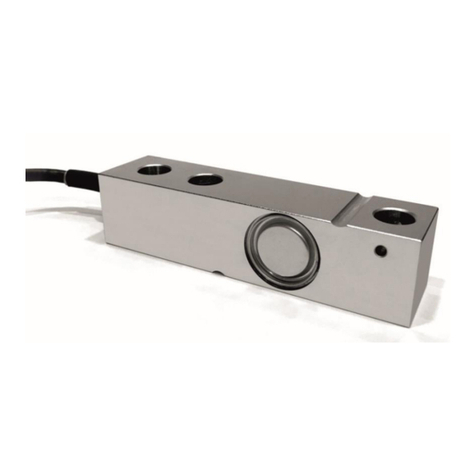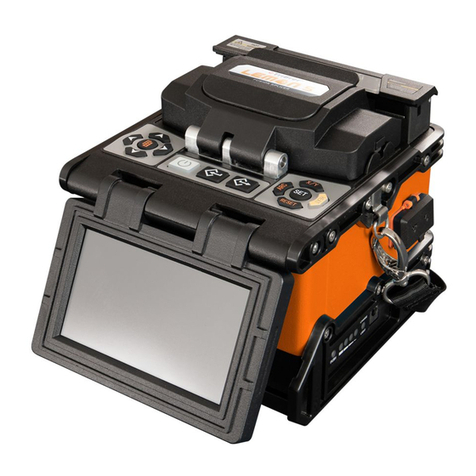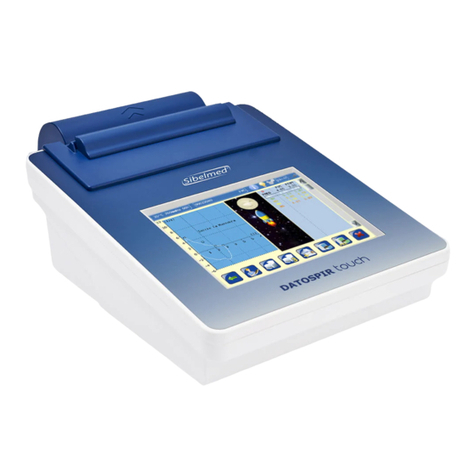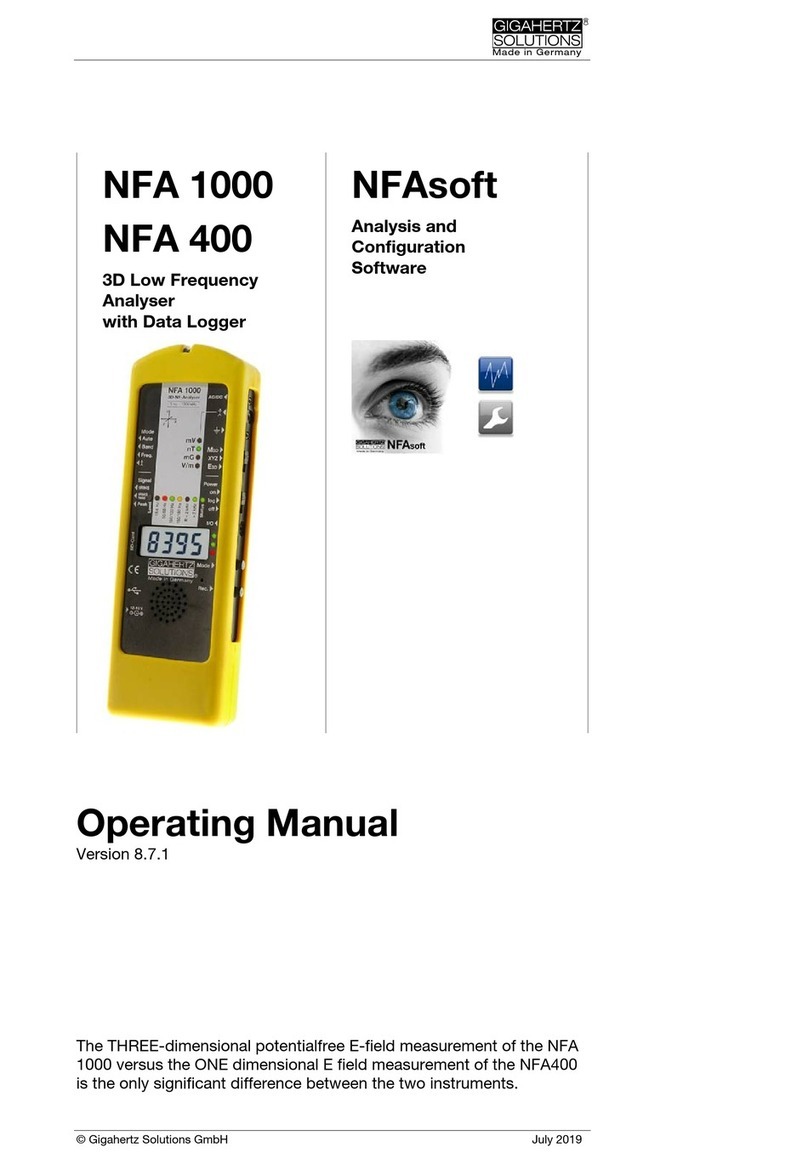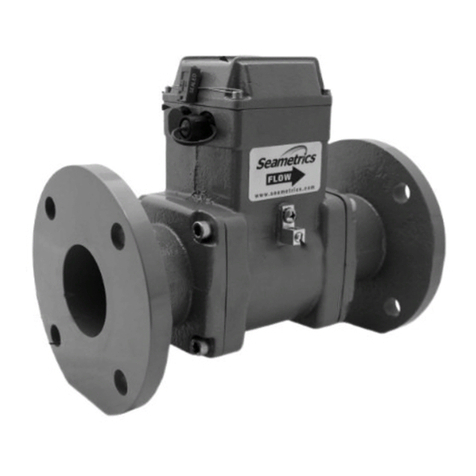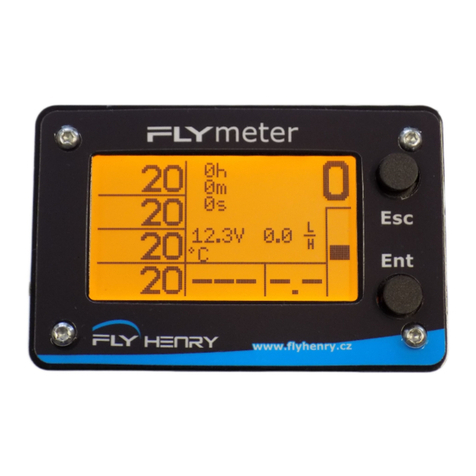biosystems A25 User manual

A25
SERVICE MANUAL
ENGLISH


TESE-00001-04-ENG
June - 2006
SERVICE MANUAL
English


TABLE OF CONTENTS
1.INTRODUCTION ................................................................................. 9
1.1. GENERAL DESCRIPTION OF THE ANALYZER ............................................................ 9
1.1.1. Operating arm...................................................................................................................................... 10
1.1.2. Dispensing system ............................................................................................................................... 10
1.1.3. Reactions rotor and reading................................................................................................................11
1.1.4. Electronic system ................................................................................................................................. 12
1.1.5. Application program ........................................................................................................................... 12
1.2. FUNCTIONING OF THE ANALYZER............................................................................. 13
1.3. TRANSPORT AND RESHIPMENT OF THE ANALYZER.............................................. 13
2.MECHANICALCOMPONENTS ........................................................ 15
2.1. Instrument breakdown................................................................................................. 15
2.2. Description of the mechanical components............................................................... 15
2.2.1. Operating arm...................................................................................................................................... 15
2.2.1.1. X guide .............................................................................................................................................. 16
2.2.1.2. X carriage .......................................................................................................................................... 17
2.2.1.3. Y carriage .......................................................................................................................................... 18
2.2.1.4. Z carriage .......................................................................................................................................... 20
2.2.2. Dispensing system ............................................................................................................................... 21
2.2.2.1. Thermostated needle ....................................................................................................................... 21
2.2.2.2. Dispensing pump .............................................................................................................................. 22
2.2.2.3. Tubes and containers ....................................................................................................................... 24
2.2.2.4. Container level control scales......................................................................................................... 25
2.2.2.5. Racks tray with integrated washing station ................................................................................... 26
2.2.2.6. Washing pumps ................................................................................................................................ 27
2.2.3. Reactions rotor with integrated optical system ................................................................................ 27
2.2.3.1. Thermostated rotor and photometric system ................................................................................. 28
2.2.3.2. Lighting system ................................................................................................................................. 31
2.2.4. Back covers .......................................................................................................................................... 33
2.2.4.1. Connectors cover .............................................................................................................................. 33
2.2.4.2. Switch cover...................................................................................................................................... 33
2.2.4.3. Electronics cover .............................................................................................................................. 34
2.2.5. Main cover hinges ............................................................................................................................... 35
2.2.6. Base ...................................................................................................................................................... 35
2.2.7.Housings ............................................................................................................................................... 36
3. Electronic system and fluids ......................................................... 38
3.1 CPU Board (CIIM00006) ................................................................................................ 38
3.2 Power Supply Board (CIIM00007) ................................................................................ 44
3.3 Needle Board (CIIM00008) ............................................................................................ 46
3.4 Photometry Board (CIIM00009) .................................................................................... 47
3.5 Racks Board (CIIM00010).............................................................................................. 48
3.6 LED Board (CIIM00011) ................................................................................................. 48
3.7 Communications Board (CIIM00019) ........................................................................... 49
3.8 Interconnection between boards ................................................................................. 49
3.9 Boards interconnection ................................................................................................ 54
3.10 Schematic liquid circuit............................................................................................... 62
4.SERVICEPROGRAM....................................................................... 63
4.1 Initialising the analyser ................................................................................................. 63
4.2. ADJUSTMENTS ............................................................................................................ 65
4.2.1. Adjustment of the needle thermostatation system........................................................................... 65
4.2.2. Adjustment of the rotor thermostation system .................................................................................. 66

4.2.3. Adjustment of the positioning of the operating arm ........................................................................ 67
4.2.3.1 Adjusting the maximum sweep of the Z axis.................................................................................. 67
4.2.4. Adjustment of the positioning of the rotor ........................................................................................ 69
4.2.4.1. Centering of the rotor with regard to the dispensing point.......................................................... 69
4.2.4.2. Centering of the rotor with regard to the optical system.............................................................. 69
4.2.5 . Adjustment of the positioning of the filter wheel ............................................................................ 70
4.2.6. Adjustment of the level control scales .............................................................................................. 71
4.2.7. Adjustment of the level detection sensitivity .................................................................................... 71
4.3. TESTS ........................................................................................................................... 72
4.3.1.Motor tests ............................................................................................................................................ 72
4.3.1.1. Initialization test ............................................................................................................................... 73
4.3.1.2. Movement test................................................................................................................................... 73
4.3.1.3.Losssteptest ..................................................................................................................................... 74
4.3.1.4. Stress mode test................................................................................................................................ 74
4.3.1.5. Z axis security systems test .............................................................................................................. 75
4.3.1.6 Maximum Z verification test ............................................................................................................. 75
4.3.2. Diaphragm pumps and electrovalves test......................................................................................... 76
4.3.2.1. Functioning test ................................................................................................................................ 77
4.3.2.2. Stress mode test................................................................................................................................ 77
4.3.3. Needle self-centering system test ...................................................................................................... 77
4.3.4. Needle level detection system test .................................................................................................... 77
4.3.5. Needle thermostatation system test................................................................................................... 78
4.3.6. Needle rotor thermostatation system test ......................................................................................... 79
4.3.7. Photometry tests .................................................................................................................................. 80
4.3.7.1. Base line and integration times ...................................................................................................... 80
4.3.7.2. Darkness counts ................................................................................................................................ 82
4.3.7.3. Repeatability without moving the filter wheel .............................................................................. 82
4.3.7.4. Stability.............................................................................................................................................. 83
4.3.7.5. Repeatability moving filter wheel .................................................................................................. 83
4.3.7.6. Absorbance measurement............................................................................................................... 84
4.3.7.7. Reactions rotor check....................................................................................................................... 84
4.3.8. Level control scales test ..................................................................................................................... 85
4.3.9. Racks and covers detection test......................................................................................................... 85
4.3.10. PC-Analyzer communications channel test .................................................................................... 86
4.3.11. Global stress mode of the analyzer ................................................................................................. 86
4.4. UTILITIES ...................................................................................................................... 87
4.4.1. Disassembly of the dispensing needle .............................................................................................. 87
4.3.2. Fluid system supply ............................................................................................................................. 88
4.3.3. Cleaning of the dispensing system .................................................................................................... 89
4.3.4. Changing the lamp .............................................................................................................................. 89
4.3.5. Configuration of the filter wheel ........................................................................................................ 90
4.3.6. Demonstration mode ........................................................................................................................... 90
4.4.7 Read/load adjustments and cycles ..................................................................................................... 91
4.5. REGISTER..................................................................................................................... 92
4.5.1. Introducing the analyzer serial number............................................................................................ 93
4.5.2. Service Reports.................................................................................................................................... 93
4.5.3. Language change................................................................................................................................ 94
4.5.4.Users...................................................................................................................................................... 94
4.6. MONITOR....................................................................................................................... 94
4.7 User’s program..............................................................................................................95
4.7.1 Configuration of the level of access to the analyser......................................................................... 95
4.7.2 Reagent Consumption .......................................................................................................................... 97
5.MAINTENANCEANDCLEANING..................................................... 99
5.1. MAINTENANCE OPERATIONS .................................................................................... 99
5.1.1. Housings and covers ........................................................................................................................... 99
5.1.1.1. Removing the arm housing ............................................................................................................. 99
5.1.1.2. Removing the front housing ............................................................................................................ 99
ServiceManual

5.1.1.3. Removing the main cover.............................................................................................................. 100
5.1.1.4. Removing the back housing .......................................................................................................... 101
5.1.1.5. Removing the main cover hinges ................................................................................................. 102
5.1.2. Operating arm.................................................................................................................................... 102
5.1.2.1. Fully removing the operating arm ................................................................................................ 102
5.1.2.2. Changing the cable carrier chain with the electrical hoses and dispensing tube .................. 102
5.1.2.3. Changing an electrical hose or the dispensing tube .................................................................. 103
5.1.2.4. Changing the X motor .................................................................................................................... 104
5.1.2.5. Changing the Y motor .................................................................................................................... 104
5.1.2.6. Changing the Z motor..................................................................................................................... 105
5.1.2.7. Changing the X motor belt ............................................................................................................ 106
5.1.2.8. Changing the Y motor belt............................................................................................................. 107
5.1.2.9 Changing the Z motor belt .............................................................................................................. 107
5.1.2.10. Changing the encoder-spring unit .............................................................................................. 108
5.1.2.11. Changing the belt return pulleys................................................................................................. 108
5.1.2.12. Changing the X start photodetector............................................................................................ 109
5.1.2.13. Changing the Y start photodetector ............................................................................................ 109
5.1.2.14. Changing the Z encoder photodetector.......................................................................................110
5.1.3. Dispensing system ..............................................................................................................................110
5.1.1.1. Removing the thermostated needle set ........................................................................................110
5.1.3.2. Changing the needle fan ................................................................................................................110
5.1.3.3. Changing the needle Peltier cell...................................................................................................110
5.1.3.4. Changing the needle temperature sensor .................................................................................... 111
5.1.3.5 Changing the ceramic pump ...........................................................................................................112
5.1.3.6. Changing the dispensing pump seal .............................................................................................112
5.1.3.7. Changing the dispensing pump motor ..........................................................................................113
5.1.3.8. Changing the dispensing electrovalve..........................................................................................113
5.1.3.9. Changing the container tube unit ..................................................................................................114
5.1.3.10. Changing the distilled water container filters ............................................................................114
5.1.3.11. Removing the racks tray................................................................................................................115
5.1.3.12. Changing the washing electrovalve ............................................................................................115
5.1.3.13. Changing the washing pumps......................................................................................................116
5.1.3.14. Changing the load cell of the level control scales..................................................................... 116
5.1.4. Reactions rotor and reading..............................................................................................................117
5.1.4.1. Changing the rotor temperature probe .........................................................................................117
5.1.4.2. Fully removing the rotor .................................................................................................................117
5.1.4.3. Changing the rotor Peltier cells .....................................................................................................118
5.1.4.4. Changing the rotor cover detector.................................................................................................119
5.1.4.5. Changing the rotor start photodetector .........................................................................................119
5.1.4.6. Changing the rotor motor .............................................................................................................. 120
5.1.4.7. Changing the rotor belt .................................................................................................................. 120
5.1.4.8. Changing the lamp ......................................................................................................................... 121
5.1.4.9. Changing an optical filter .............................................................................................................. 121
5.1.4.10. Configuration of the filter wheel ................................................................................................. 122
5.1.4.11. Changing the filter wheel start photodetector ........................................................................... 123
5.1.4.12. Changing the filter wheel motor ................................................................................................. 123
5.1.4.13. Changing the lenses ..................................................................................................................... 123
5.1.4.14. Changing the optical fan.............................................................................................................. 124
5.1.5. Electronic Systems ............................................................................................................................ 124
5.1.5.1. Changing the microprocessor board ............................................................................................ 125
5.1.5.2. Changing the power supply board ............................................................................................... 125
5.1.5.3. Changing the needle conditioning board .................................................................................... 125
5.1.5.4. Changing the racks detection board............................................................................................ 126
5.1.5.5. Changing the photometric system board ..................................................................................... 127
5.1.5.6. Changing the front indicator board .............................................................................................. 128
5.1.5.7. Change the communications board ............................................................................................. 128
5.1.5.8.Changing the firmware program ................................................................................................... 128
5.2. RECOMMENDED PREVENTIVE MAINTENANCE .................................................... 128
5.3. CARE AND CLEANING............................................................................................... 129

ServiceManual
5.3.1. General care of the analyzer ........................................................................................................... 129
5.3.2. Cleaning the optical system ............................................................................................................. 129
5.3.3. Cleaning the dispensing system ...................................................................................................... 130
5.3.4. General cleaning of the interior of the apparatus ......................................................................... 130
AI. TECHNICAL SPECIFICATIONS ................................................... 131
AII.ADJUSTMENTMARGINSTABLES ............................................ 135
AIII. LIST OF CONSUMABLES,ACCESSORIESAND SPARES....... 136
AIV. LIST OF REQUIRED TOOLS ..................................................... 141
AV. SOFTWARE VERSIONS ............................................................. 142

9
1. INTRODUCTION
TheA25 analyzerisanautomaticrandomaccessanalyzerspecially designed for performing biochemical and turbidimetric
clinical analyses. The instrument is controlledon-line in real time from an external dedicated PC.
In each of the components of the A25 analyzer, BioSystems has used leading edge technology to obtain optimum
analytical performance, as well as taking into account economy, robustness, easy use and maintenance. Athree-axis
Cartesianoperating arm preparesthereactions. Dispensing isperformedby means ofapump with aceramicpiston via
a detachable thermostatised needle with Fuzzy Logic control. A washing station guarantees that the needle is kept
perfectlycleanthroughout the process.Thereactionstakeplace in athermostatisedrotorin which absorbancereadings
are taken directly by means of an integrated optical system.
Thismanual contains theinformationrequired forlearningabout, maintaining andrepairingthe A25 automaticanalyzer.
ItshouldbeusedbytheTechnical Service as alearning andconsultation documentforthemaintenanceandrepair of the
instrument.Chapter2describes thedifferentmechanicalcomponentsthatformtheanalyzertogetherwiththeirfunctionality,
and chapter 3 describes the electronic system. Chapter 4 describes the Service Program. All the adjustments and
checks of the analyzer are carried out through this program, which is independent from the application program (User
Program).Theseparation of bothprogramsenableit to bemaintainedseparatelyand the extensionsandimprovements
of one do not affect the other. The user does not have the service program. The Technical Service must install it on the
user’s computer in order to carry out the service requirements. Once said tasks have been carried out, the Technical
Service must uninstall the program. Chapter 5 offers instructions for the different maintenance, repair and cleaning
operationsthatcanbecarriedoutbytheTechnicalService.Theannexescontain a summary of the technical specifications
of the analyzer, the adjustment margin tables, the lists of accessories and spares, a list of software versions and their
compatibilityand asoftwaretroubleshooting guide.
1.1. GENERAL DESCRIPTION OF THE ANALYZER
The A25 analyzerismade upofthreebasiccomponents: the operatingarm,thedispensing system andthereadingand
reactions rotor. The electronic systemof the instrumentcontrols said components andcommunicates with theexternal

10
Servicemanual
computercontainingtheapplicationprogram.Throughthisprogram,theusercancontrolalltheoperationsoftheanalyzer.
The analyzer may be fitted with the option of an external module for measuring ion concentration.
1.1.1. Operating arm
Thisisathree-axis XYZCartesianmechanism.TheXandYaxesmovethedispensingneedleovertheanalyzer horizontally
and the Z axis moves it vertically. It is operated by three step-by-step motors. In each 15-second preparation cycle, the
operating arm performs the following actions: first of all, it sucks in the reagent from the corresponding bottle. Next, the
needle is washed externally in the washing station and sucks in the sample from the corresponding tube. It is washed
externally again and dispenses the sample and the reagent into the reactions rotor. Finally, it is exhaustively washed
internally and externally before proceeding with the next preparation. The arm has a system for controlling vertical
movementto detect whetherornotthe needlehascollidedinto anything ondescending.If a collisionoccurs,asmay be
thecase if, forexample,a lid hasbeenleft onabottleof reagent,thearm automatically restarts,verifiesthe straightness
oftheneedle and continuesworkingissuingthecorresponding alert totheuser.Averticalaxisretentionsystemprevents
theneedle from fallingin the caseofa powercut,avoiding injury fromtheneedle totheuser or theneedle being bentby
anattempttomove the arm manually.The operating arm onlymakesthepreparationsifthegeneral cover of theanalyzer
is closed. If the cover is raised while it is functioning, the arm automatically aborts the task in progress and returns to its
parked position to avoid injury to the user.
1.1.2. Dispensing system
This system consists of a thermostatised needle, supported and displaced by an operating arm and connected to a
dispensingpump.Theneedleis detachabletoenablecleaningandreplacement.Theanalyzerhas capacityleveldetection
tocontrolthe level ofthebottlesandtubes and preventtheneedlefrom penetrating toofarintothecorresponding liquids,
thus minimising contamination. An automatic adjustment system informs the user if the needle is not mounted or if it is
too bent. The needle has a sophisticated Peltier thermostatisation system, with Fuzzy Logic control, capable of
thermostatising the preparations at approximately 37º in less than 6 seconds. Dispensing is carried out by means of a
lowmaintenanceceramicpistonpumpdrivenbyastep-by-stepmotor.Itiscapableofdispensingbetween3and1250 L.
The exterior of the needle is kept constantly clean by means of a washing station, which consists of a font specially
designed to clean and dry the needle, integrated in the racks tray.Asystem of diaphragm pumps supplies the font with
distilled water and transports the waste to its container.
The A25 analyzer has a tray with 6 free positions for racks of reagents or samples, plus three fixed positions for bottles
opposite the washing station. Each reagents rack can carry up to 10 reagents in 20 ml or 50 ml bottles. Each samples
rack can contain up to 24 tubes of samples. The samples can be patients, calibrators or controls. The analyzer can be
configured to work with 13 mm or 15 mm diameter tubes of samples with a length of up to 100 mm or with paediatric
wells.Anypossibleconfiguration of rackscanbe mountedfrom1rack ofreagents(10 reagents) and5racks of samples

11
(120 samples) to 5 racks of reagents (50 reagents) and 1 rack of samples (24 samples). Any reagent may be placed in
thefixed positions, butitisrecommendable to usethemforthe bottles ofdistilledwater, saline solutionfortheautomatic
pre-dilutions and washing solution. The rack tray detects and identifies the type of racks. In this way, if the physical
disposition of the racks does not coincide with that programd on the computer, the analyzer alerts the user.
Ontheleft of theanalyzerarethewaste and distilledwatercontainers.Theanalyzerconstantly controls thelevelofthese
containers and issues the appropriate alerts if the distilled water is nearly empty or if the waste container is full.
1.1.3. Reactions rotor and reading
The preparations are dispensed in an optical quality methacrylate reactions rotor thermostatised at 37ºC. The optical
absorbance readings are taken directly on this rotor. Each reaction can be read for 15 minutes. The readings are taken
asthey are programdineach measurement procedure.Thereaction wells havebeendesigned to enablethemixture of
thesampleand the reagentduringthedispensing.Eachrotor has 120reactionwells.Thelength of thelightpathis6 mm.
Theminimumvolumerequired to take theopticalreadingis200L.Thewellshaveamaximumusefulcapacityof800L.
When the reactions rotor is completely full, the user must change it with one that is empty, clean and dry. The reactions
rotorscan be reusedupto 5 timesifthey are carefullycleanedimmediately after use.TheCleaning the semi-disposable
reactions rotor section in the User’s Manual describes how to clean the rotors. The user has a test in the computer
program, which he or she may use to check the condition of the rotor. The rotor is driven by a step-by-step motor with a
transmission.A Peltier system with PID control thermostatises the rotor at 37ºC.
An optical system integrated in the rotor takes the readings directly on the reaction wells. The light source is a 20 W
halogenlamp. Thedetectoris asiliconphotodiode. The wavelengthis selected bya wheel with9 positions availablefor
opticfilters.Thefiltersareeasilychangedbytheuserfromthe exterior of the analyzer,without theneed fordisassembling
thefilter wheel.Astep-by-step motorpositionsthewheel. The opticalsystemiscapable of taking5readings per second,
withor withoutafilter changeinbetween. The lightbeam of thelamp passes througha compensated interferentialfilter
toselectthe desiredwavelengthandthroughfocalisation lenses. Itthenpassesthrough the rotorwellandfinally reaches
the photodiode, where the light signal is turned into an electric signal. A sophisticated analogical digital integrator-
convertersystem converts theelectricsignal intoadigital value withwhichthe analyzerobtainsthe absorbance values.

12
Servicemanual
Theopticalsystem continues toworkwhenthegeneralcover of theanalyzerisopen,whereby the analyzercancontinue
totakereadings while theuserhandles,for example, thesampletubesorthe reagent bottles.Therotorcovermust be in
place for the optical system to work correctly.A detector tells the analyzer of the presence of the cover. The analyzer
aborts the readings if the user removes the rotor cover while the optical system is taking photometric measurements. If
therotor isnot covered, theanalyzer informsthe user sothat heor she placesthe rotorcover when itsends samplesto
be analyzed.
1.1.4. Electronic system
Thedescribedcomponents are controlledbyanelectronicsystembased on amicroprocessor.The microprocessorhas
two external communication channels that make it possible to link up the instrument to the computer containing the
applicationprogram andtoan optional externalmodulefor measuringionconcentration. The electronicsystem is made
upof the followingindependentboards:
- Microprocessorboard
- Photometric system board
- Needleconditioningboard
- Racksdetection board
- Frontindicator board
- Powersupply board
- Communicationsboard
1.1.5. Application program
Theapplication programmakesit possible tocontrol all theoperationsof theanalyzer.From this program,the user can
monitor the state of the analyzer and the work session, program parameters, e.g. technique parameters, prepare the
work session, prepare results reports, configure different analyzer options, activate various test utilities, prepare and
maintainthe instrument andcarry out internalqualitycontrol processes.Thepurpose of thismanualis nottoexplain the
functioning of the user program. For detailed information to this regard, please consult the User’s Manual included with
the analyzer.

13
1.2. FUNCTIONING OF THE ANALYZER
TheA25 analyzerisanautomaticrandomaccessanalyzerspecially designed for performing biochemical and turbidimetric
clinicalanalyses. The analyzerperforms patient-by-patient analysesandenables the continualintroduction of samples.
The analyzer is controlled from a dedicated PC that is permanently communicated to the instrument. The program,
installed on the computer, keeps the user constantly informed of the status of the analyzer and the progress of the
analyses.As results are obtained, the computer shows them to the user immediately.
When a WorkSession is begun,theanalyzer proposes performingtheblanks, calibrators andcontrolsprogramd for the
measurement procedures it is to carry out. The user may choose between performing the blanks and the calibrators or
not.Iftheyare not performed,theanalyzerusesthelast available memorised data.Thecontrolscanalsobe activated or
not. During a session, while the analyzer is working, the user can introduce new normal or urgent samples to be
analyzed. Each time a new sample is added, the analyzer automatically proposes the possible new blanks, calibrators
or controls to be performed. A work session can remain open for one or more days. When a session is closed and
another new session is opened (Reset Session), the analyzer again proposes performing the blanks, calibrators and
controls. It is recommended that the session is reset each working day.
The analyzer determines the concentrations of the analytes based on optical absorbance measurements. To measure
the concentration of a certain analyte in a sample, the analyzer uses a pipette to take a specific volume of the sample
and the corresponding reagent, quickly thermostatises them in the needle itself and dispenses them into the reactions
rotor.Theverydispensingspeedtogether with the geometryofthereactionwellcausesthemixtureto be shaken andthe
chemical reaction begins. In the bireagent modes, the reaction begins when the analyzer later dispenses a second
reagent in the same reaction well. The reactions can be biochemical or turbidimetric. In both cases, the reaction or the
chainofreactionsproducedgenerate substancesthatattenuatecertainwavelengths,eitherbyabsorptionorbydispersion.
Comparing the light intensity of a certain wavelength that crosses a well when there is a reaction and when there is not
areaction can determinetheconcentrationof the correspondinganalyte.Thiscomparison is quantifiedwiththephysical
magnitude called absorbance. In some cases, the concentration is a direct function of the absorbance, and in other
cases, it is a function of the variation of the absorbance over time, depending on the analysis mode.
1.3. TRANSPORT AND RESHIPMENT OF THE ANALYZER
Iftheanalyzeristo be reshipped ormovedusingatransportvehicle,itis important to blocktheoperatingarmandusethe
original packaging to ensure that the apparatus is not damaged. To package the instrument, we recommend you follow
the following instructions: (on the unpackaging instructions sheet).

14
Servicemanual
Screws (1) and (2) are for blocking
andunblockingthearmmechanism.

15
2. MECHANICAL COMPONENTS
2.1. Instrument breakdown
The physical structure of the analyzer can be broken down as follows:
·Operatingarm
-X guide.
-Xcarriage.
- Y carriage. This includes the spring and encoder of the Z carriage.
-Zcarriage.This isthecarriagecarryingthethermostatedneedle.It includestheelectronicneedleconditioning
board.
- Cable carrier chains. These contain the electrical hoses of the arm and the dispensing tube.
· Dispensing system.
-Thermostatedprobe.
-Dispensing pump.
-Tubes and containers.
-Container levelcontrolscales.
- Racks tray with integrated washing station. This includes the electronic racks detection board.
-Washing pumps.
·Reactions rotor with integrated optical system.
- Thermostated rotor and photometric system. This contains the electronic photometric system board.
- Lighting system.
·Back covers
·Main cover hinges.
·Base. This houses the electronic boards of the microprocessor, the power supply and the front indicator.
·Housings.
- Back housing.
- Front housing. This houses the optical and rotor covers.
-Arm housing.
-Main cover.
The following is a brief description of each of the mechanical components that make up the analyzer.
2.2. Description of the mechanical components
2.2.1. Operating arm
Thismechanism positions thedispensingneedle appropriately duringthepreparation of theanalyses.Anencoder
checks the vertical movement of the needle and a spring automatically stops it from falling in the case of a power
cut. The dispensing tube and the electrical hoses of the arm are housed in cable carrier chains, which guide them
appropriately. A housing unit covers the Y and Z carriages.
(1) XGUIDE
(2) XCARRIAGE
(3) YCARRIAGE
(4) ZCARRIAGE
(5) CABLECARRIERCHAIN
(6) TEFLONDISPENSINGTUBE
(7) ELECTRICALHOSES
(8) YCARRIAGE CHAIN SUPPORTCOVER

16
Servicemanual
TheZ carriage (4)supportsthethermostated needleandcanbe displaced overtheY carriage (3),which,inturn, can
bedisplaced over theXcarriage(2), which, inturn,canbe displaced overtheXguide (1). Inthisway,theneedle can
bedisplaced in thethreeCartesiandirections of X,YandZ. Thecablecarrierchain (5) housestheTeflondispensing
tube (6) and all the electrical hoses (7) of the arm. The support cover (8) guides the cable carrier chain of the Y
carriagealongtheXcarriage.
2.2.1.1. X guide
(1) X GUIDEPROFILE
(2) X TRACKRAILS
(3) XSTARTPHOTODETECTOR
(4) RETURN PULLEY
(5) BEARING
(6) OPERATINGPULLEY
(7) XMOTOR
Thisconsistsofanaluminiumprofile(1)whichholdsthesteelrails(2) on which the X carriage runs.The photodetector
(3) indicates the position of the start of the movement of the X carriage. The motor (7) operates the belt of the X
carriage by means of the pulley (6). The pulley (4), fitted on the bearing (5), returns the belt operated by the motor.
34521 7 6
3
251
7
6
4
8X
Z
Y

17
2.2.1.2. X carriage
(1) XCARRIAGE BODY
(2) Y GUIDE PROFILE
(3) Y TRACKRAILS
(4) YSTARTPHOTODETECTOR
(5) XSTARTDETECTIONBARRIER
(6) LINEARSLIDEUNIT
(7) NOTCHEDBELT
(8) BELTFASTENING
(9) RETURN PULLEY
(10) BEARING
(11) OPERATINGPULLEY
(12) YMOTOR
(13) XCARRIAGECHAINSUPPORTCOVER
(14) XCARRIAGECHAINTERMINAL
(15) YCARRIAGECHAINTERMINAL
(16) YGUIDERUBBERPROTECTION
2
9
10
3
41
812 7
13

18
Servicemanual
TheX carriagecanrun over theX guide. Thebodyof theXcarriage (1)supportsthe aluminium profile(2) that holdsthe
steel rails (3) on which the Y carriage runs. The photodetector (4) indicates the start position of the movement of the Y
carriage.Themotor (12) operates theYcarriagebeltby means of thepulley(11).Thepulley(9),fittedonthebearing(10),
returnsthebelt operated bythemotor.Thebarrier (5) obstructstheXstartphotodetector when the Xcarriagereachesits
start position. The X carriage runs on its guide using the linear slide unit (6) fastened to the carriage body. The belt (7)
operatesthe X carriage.It is heldtothe bodyofthe X carriagebymeans ofthefastening (8). Thesupport (13) holdsthe
terminaloftheXcarriagechain(14).TheYcarriagechainterminal(15)isscrewed directly onto the X carriage. The rubber
protection(16) prevents theYguide frominjuringthe user.
2.2.1.3. Y carriage
(1) ZGUIDEPROFILE
(2) ZTRACKRAILS
(3) YSTARTDETECTIONBARRIER
(4) ZSTARTDETECTIONBARRIER
(5) LINEARSLIDEUNIT
(6) YCARRIAGE CHAIN TERMINAL
(7) ZCARRIAGECHAIN TERMINAL
(8) NOTCHEDBELT
(9) BELTFASTENING
(10) RETURNPULLEY
(11) BEARING
(12) OPERATINGPULLEY
(13) Y CARRIAGE CHAINSUPPORTCOVER
(14) ENCODERPHOTODETECTOR
(15) ENCODER
(16) SPRING
(17) SPRINGFASTENING
(18) SUPPORTBODY
(19) COVER
(20) BONDINGSTRIP
(21) UNITHOLDING
(22) ZMOTOR
17
6
15
5
11
14

19
7
13
5
20
14
17
21
17 16
22 15
18
19
7
13
10
4
11
2
9
812

20
Servicemanual
TheYcarriage can run ontheYguide,which forms partoftheXcarriage.The aluminium profile(1),whichholdsthesteel
rails(2) on whichtheZcarriage runs, constitutesthebodyof the Ycarriageitself.The motor (22)operatestheZ carriage
beltthrough the pulley(13).The pulley (11),fittedon thebearing(12), returns thebelt operated bythemotor.Thebarrier
(3)obstructsthe Xstartphotodetectorwhen the Xcarriagereachesits start position.Thebarrier(4) obstructs theZstart
photodetector when the Z carriage reaches its start position. The Y carriage runs on its guide using the linear slide unit
(5) fastened to the carriage body. The belt (9) operates the Y carriage. It is held to the body of the Y carriage by means
of the fastening (10). The support (14) holds the Y and Z carriage chain terminals (7) and the arm housing. The spring-
encoderunitof the Zcarriageismade up ofcomponents(15)-(22).Part (19) ismadeupof the systembodyandcontains
the self-raising spring (17) and the encoder (16) for the detection of vertical collisions. Part (18) joins the spring to the
encoder.Thephotodetector (15) detectstheturnof theencoderwhenit runs alongtheZcarriage. The cover(20)closes
thesystem. The motor(23)hastwo shafts. Itsbackshaft has theencoder(16)and its frontshafthasthe operatingpulley
of the Z carriage (13). Part (22) holds the system body (19) to the motor. The board (21) joins the system to the
instrumentframe.
2.2.1.4. Z carriage
(1) ELECTRONICNEEDLECONDITIONINGBOARD
(2) BOARDSUPPORT
(3) LINEARSLIDEUNIT
(4) ZCARRIAGECHAIN TERMINAL
(5) ZCARRIAGE BODY
(6) GEAREDBELT
(7) BELTFASTENING
(8) THERMOSTATEDNEEDLE
14
2
3
5
8
7
6
Table of contents
Other biosystems Measuring Instrument manuals
Popular Measuring Instrument manuals by other brands
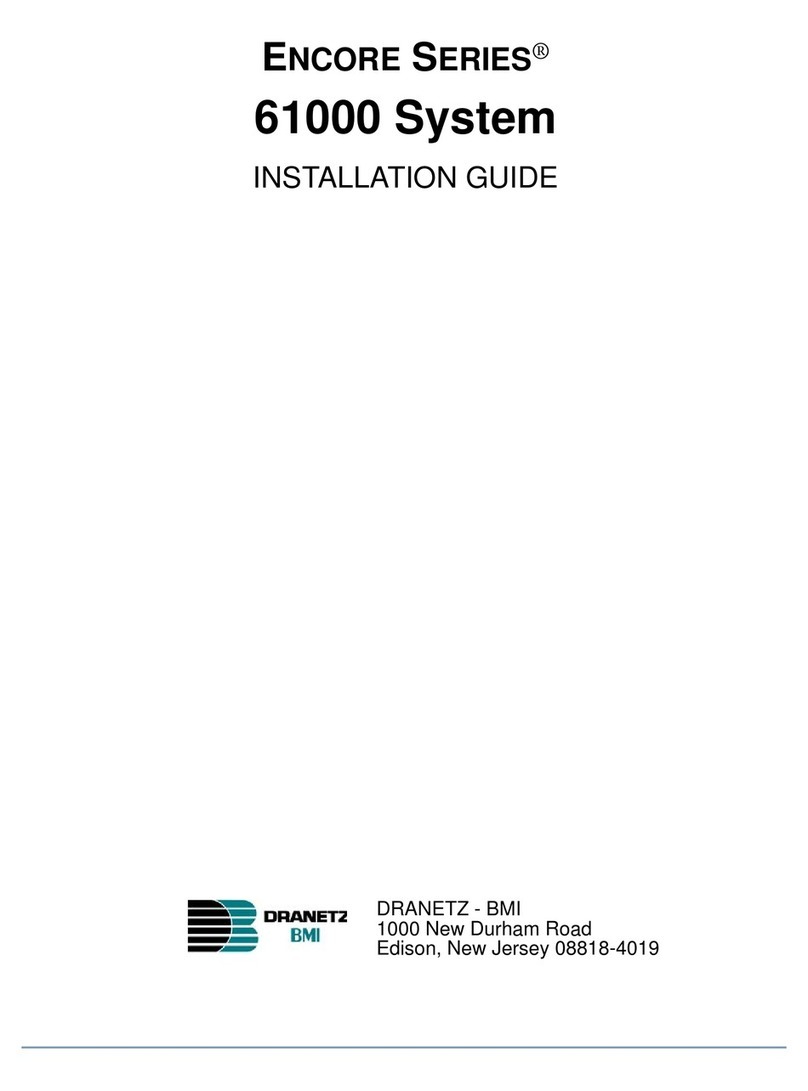
Dranetz
Dranetz Encore Serirs 6100 System installation guide

International Light Technologies
International Light Technologies ILT1000 Operation manual
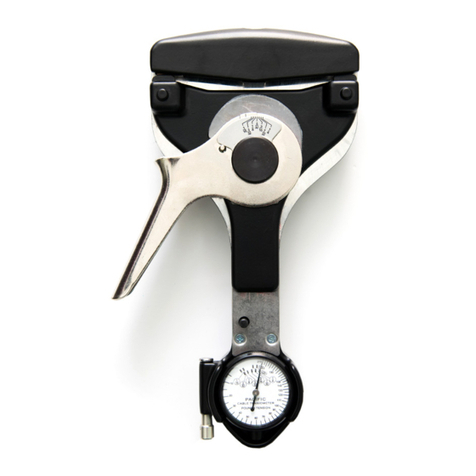
Optimanufacturing
Optimanufacturing T60-1001-C8-1A Operation & service manual
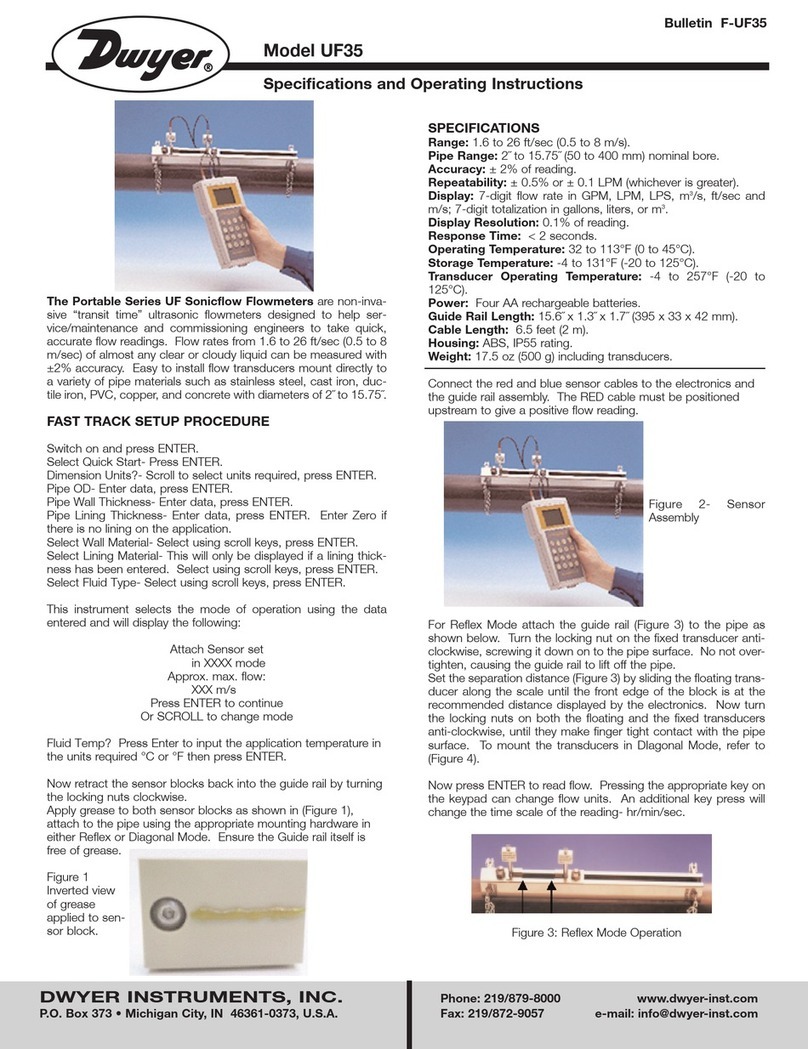
Dwyer Instruments
Dwyer Instruments UF35 operating instructions

Horizon Fitness
Horizon Fitness P-1000 Installation instructions manual

Esco
Esco ETS-LINDGREN HI-6113 user manual
